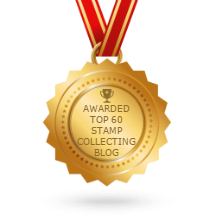Canada Post is recalling all stamps commemorating Dinosaur Provincial Park, issued to post offices last week, because the hoodoos on the stamp don’t exist there but are actually from east of Drumheller, Alberta. However, the image is labelled as Alberta’s Dinosaur Provincial Park, which is almost two hours away.
Spokeswoman Anick Losier says the stamps, which were part of a pack of five, were issued on the 3d July and meant to celebrate the country’s UNESCO World Heritage Sites. Almost immediately, Canada Post received feedback that it had made a mistake and took full responsibility for the flub on the 6th July.
“We contacted the mayor of Drumheller, Alberta Parks as well as the Canadian Badlands Tourism to apologize”, Losier says.
Once the mistake was confirmed, the stamps were pulled from Canada Post’s website and mail orders. The agency is currently recalling the product from about 6,000 post offices across the country. Once the incorrect stamps are collected, they will be destroyed.
Canada Post buys images from photographers or hires them to shoot a series. It also works with a stamp advisory committee and organizations like Parks Canada to source the right photos.
“Somehow in the process we missed the piece that led to this unfortunate mistake”, Loiser says. “That part of the process we’ve reviewed and have fixed to make sure this doesn’t happen again”.
Canada Post is currently working with Parks Canada and Dinosaur Provincial Park to reissue the stamp as soon as possible.
Mistakes on postage stamps are rare but not completely unheard of.Emil Hakim who runs the retail shop Century Stamps and Coins in Mississauga says the value of an erroneous stamp depends on how many are snapped up by private collectors.
“If less than 100,000 get in private hands, the rarity would go up”, he says. “You’re looking for something that’s going to be sought after. The value will decrease if there’s more issued”.
The market sets the price after about a year, when it’s established exactly how many of the stamps were bought.
Hakim says in 1995, a stamp was issued as part of a migrated wildlife set, which featured the word “fawn” without the “f”. Since a high number of those were released, the corrected version is worth more than the wrong one. Over 4.5 million were released, and when the mistake was discovered, 800,000 were corrected and put back into circulation.
Another factor that determines the market value is how many were actually placed on letters and mailed, says John Sheffield, executive director of the Canadian Stamp Dealers’ Association.
“My hunch is the market value will not be as great as some other printing errors that have happened in the past”, he says. “It could take years for the number in circulation to be known and a value to be determined”.
He says it’s now known that there were only 400 copies of the 1959 St. Lawrence Seaway five-cent stamp with the centre inverted that made it into public hands.
Unused copies of this stamp have a catalogue value of US$10,000 and used ones are US$8,000.
“This Dinosaur Provincial Park ‘flub’ is nowhere near as significant as the Seaway error and the market value will be whatever a collector is prepared to pay”, Sheffield says.Canada Post could not confirm the number of erroneous Dinosaur Park stamps in circulation.


































No comments:
Post a Comment